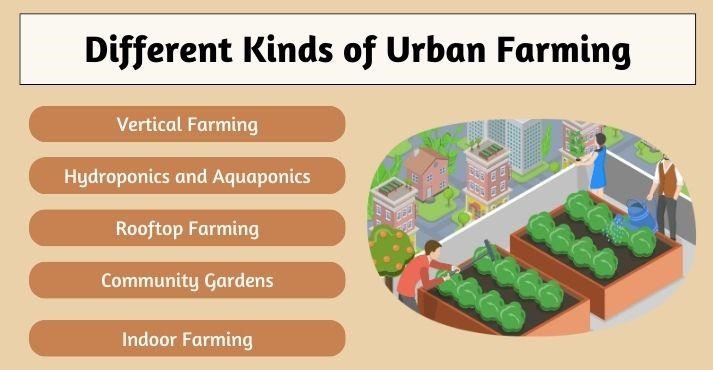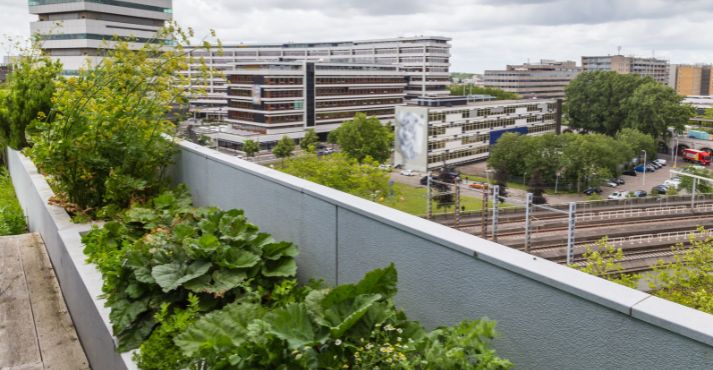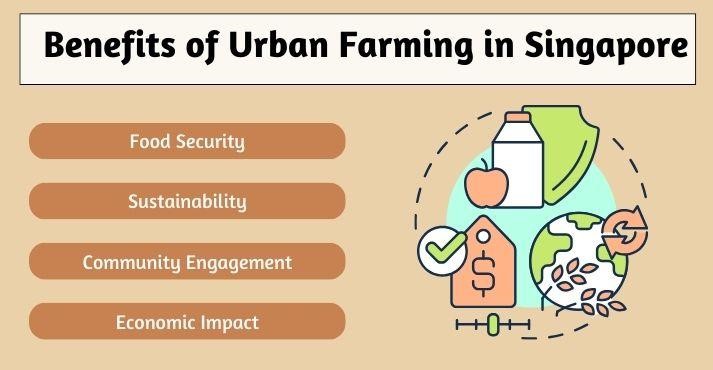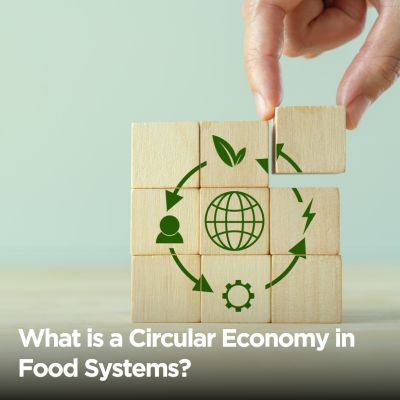Urban farming is gaining popularity worldwide, especially in densely populated areas like Southeast Asia. According to a report by EDB Singapore, the government has invested over US$229.3 million in urban farming and related initiatives.
This investment growth is a response to rising concerns about food security and sustainability in cities. But what is urban farming, and why is it becoming so important?
Urban farming involves growing, processing, and distributing food within or around cities. This type of farming helps cities reduce their reliance on imported food, ensuring a more stable local food supply.
In places like Singapore, urban farming is vital to the government’s “30 by 30 goal“, which aims to produce 30% of the country’s nutritional needs locally by 2030.
What is Urban Farming?

Urban farming refers to growing, processing, and distributing food in or around cities. It’s also known as urban agriculture or city farming, and it helps cities address food security issues by producing food locally.
This type of farming takes many forms, including community gardens, vertical farms, and rooftops.
Urban farming is not a new concept. It has been practiced in various forms for centuries. Still, it has gained more attention in recent years, especially in fast-growing cities.
Due to limited space for traditional farming, urban farming is becoming more critical in densely populated regions like Southeast Asia.
This practice is part of a broader effort to increase local food production in places like Singapore. For example, Singapore’s “30 by 30” goal is a key initiative that aims to produce 30% of the country’s nutritional needs locally by 2030. Urban farms and urban gardening play a vital role in achieving this goal.
Today, urban farming techniques include advanced methods like vertical and indoor farms that maximize space and efficiency, helping cities meet their food production needs.
Types of Urban Farming

Urban farming comes in different forms, depending on the community’s available space, resources, and goals. Let’s explore the most common urban farming techniques used worldwide, focusing on examples from Singapore.
1. Vertical Farming
Vertical farming is one of the most innovative methods of urban farming. It involves growing crops in vertically stacked layers, often in controlled indoor environments. This method helps maximize the use of limited space in urban areas, making it ideal for cities.
One great example is Sky Greens in Singapore, which is the world’s first low-carbon, hydraulic-driven vertical farm. Sky Greens uses rotating towers that ensure all plants get equal exposure to sunlight and water, creating an efficient way to grow food while minimizing energy use.
Vertical farming saves space and reduces the carbon footprint by bringing food production closer to consumers.
2. Hydroponics and Aquaponics
Another popular method in urban farming is hydroponics, which involves growing plants without soil and using nutrient-rich water instead. In urban areas, where soil may be scarce or unsuitable for farming, hydroponics allows for more control over plant growth.
An example of this in Singapore is Sustenir Agriculture, which grows leafy greens using hydroponics. Their farming system ensures that plants get the right amount of nutrients, light, and water for optimal growth, all within a small indoor space.
Aquaponics is a similar method that combines fish farming (aquaculture) with hydroponics. The waste produced by the fish provides nutrients for the plants, creating a sustainable, closed-loop system.
This highly efficient and eco-friendly method makes it an excellent option for urban areas where fish and vegetables can be produced in the same space.
3. Rooftop Farming

Rooftop farming uses unused rooftop spaces in cities to grow food. These farms can range from small gardens to larger, more commercial-scale operations. One of Singapore’s most notable examples is Comcrop, which operates a commercial farm on a rooftop in the middle of the city.
This farm uses vertical structures and hydroponic techniques to grow fresh vegetables sold at local markets and restaurants. Rooftop farming is a creative solution for cities looking to turn underutilized spaces into productive urban farms.
4. Community Gardens
Community gardens are an essential aspect of urban farming that brings people together to grow food collectively. These gardens are often located in public spaces, where local residents can participate in growing vegetables, fruits, and herbs.
In Singapore, the Community in Bloom initiative by the National Parks Board encourages residents to create and maintain gardens in their neighborhoods. These gardens provide fresh produce and create a sense of community and shared responsibility for the environment.
5. Indoor Farming
Indoor farming is a high-tech approach to urban farming that involves growing crops in controlled environments, often using advanced technology.
In Singapore, companies like Archisen lead the way with indoor farms that use innovative technology to monitor and manage crop-growing conditions.
These farms can control light, temperature, humidity, and nutrients, creating an ideal environment for plants to thrive. Indoor farming is particularly useful in cities where outdoor space is limited, and it can produce high yields year-round regardless of weather conditions.
Benefits of Urban Farming in Singapore

Urban farming offers numerous benefits, particularly in cities like Singapore, where limited space and food security are significant concerns.
With the growing importance of local food production, urban farming provides several solutions to challenges related to sustainability, community engagement, and economic growth. Let’s look deeper at the advantages of urban agriculture to a bustling city like Singapore.
1. Food Security
In Singapore, urban farming plays a critical role in enhancing food security. As a small island nation, Singapore imports more than 90% of its food, making it vulnerable to global supply chain disruptions. Climate change, geopolitical tensions, and pandemics can all threaten the stability of food imports.
By promoting urban agriculture, Singapore can mitigate these risks by producing more of its own food locally. Urban farms help ensure a stable food supply, especially during times of crisis or when import channels are disrupted.
- The “30 by 30” initiative aims to produce 30% of Singapore’s nutritional needs locally by 2030.
- Vertical farming techniques maximize space, allowing for year-round production in urban areas.
2. Sustainability
Another significant benefit of urban farming is its contribution to sustainability. Traditional farming often requires large amounts of land, water, and energy, but urban agriculture uses more efficient techniques that reduce resource consumption.
One example is hydroponics, a soil-less method of growing plants that uses less water than conventional farming. In Singapore, hydroponic farms like Sustenir Agriculture are helping to produce fresh, leafy greens with minimal environmental impact.
- Urban farming reduces the carbon footprint associated with food transportation.
- Techniques like hydroponics and vertical farming use less water and land, contributing to the Singapore Green Plan 2030.
3. Community Engagement
Urban farming also promotes a sense of community. In Singapore, projects like Edible Garden City encourage residents to participate in farming activities, creating spaces where people can come together and engage with one another.
These urban farms offer opportunities for people to learn about growing food and sustainable living through hands-on experiences.
When residents are allowed to be involved in urban gardening, these initiatives help strengthen social bonds and build a shared sense of responsibility toward food production and environmental protection.
- Community-driven projects like Community in Bloom promote sustainability and promote neighborhood cooperation.
- Workshops, educational tours, and events raise awareness about the benefits of urban farming.
4. Economic Impact
From an economic perspective, urban farming positively affects Singapore’s local economy. First, it creates jobs within the city by providing employment opportunities for people working in the farming and agricultural technology sectors.
Companies like Comcrop and Archisen are growing food, employing local workers, and contributing to the development of Singapore’s agri-tech industry.
These urban farms also support local restaurants and food manufacturers by providing fresh, locally-grown produce, which reduces the need for imported goods.
- Urban farming supports the agri-tech industry by promoting indoor and smart agriculture innovation.
- Local businesses benefit from farm-to-table practices that keep the food supply chain shorter and more sustainable.
Challenges and Solutions in Urban Farming
Although urban farming offers many benefits, it also comes with challenges, especially in densely populated cities like Singapore. Let’s explore some of these challenges and the solutions being implemented.
1. Space Constraints
One of the biggest challenges in urban farming is the need for more space in cities. Urban areas are often crowded with buildings, leaving little room for traditional farming.
However, solutions like vertical farming and rooftop farming help maximize the use of available space. When growing food in vertical layers or on rooftops, cities can produce more food in less space.
2. Cost of Implementation
Starting and maintaining an urban farm can be expensive due to the high land, equipment, and technology costs. The government has provided grants and subsidies to support urban farming projects in Singapore.
For example, the 30 by 30 initiative includes financial support to help urban farmers overcome the costs of setting up and running their farms.
3. Technological Integration
Technology plays a crucial role in making urban farming more efficient and productive. Advanced technologies like climate control systems, artificial intelligence (AI), and automation are helping urban farms overcome challenges related to space and labor.
For example, companies like Archisen use AI to monitor and optimize growing conditions in indoor farms, ensuring that crops receive the right amount of light, water, and nutrients at all times.
Innovative solutions such as intelligent irrigation systems, sensor-based monitoring, and precision agriculture techniques enhance the efficiency and productivity of urban farms.
Conclusion
Now that we know about urban farming, we can conclude that it is a growing solution to food security and sustainability challenges, especially in densely populated cities like Singapore.
With innovative urban farming techniques such as vertical farming, hydroponics, and indoor farming, cities can produce more food locally, reduce their carbon footprint, and encourage community engagement.
Although there are challenges like space limitations and high costs, solutions like government support and technological advancements are helping urban farms thrive.
As cities worldwide continue to grow, urban farming will become increasingly important in ensuring a more sustainable future for everyone.





























